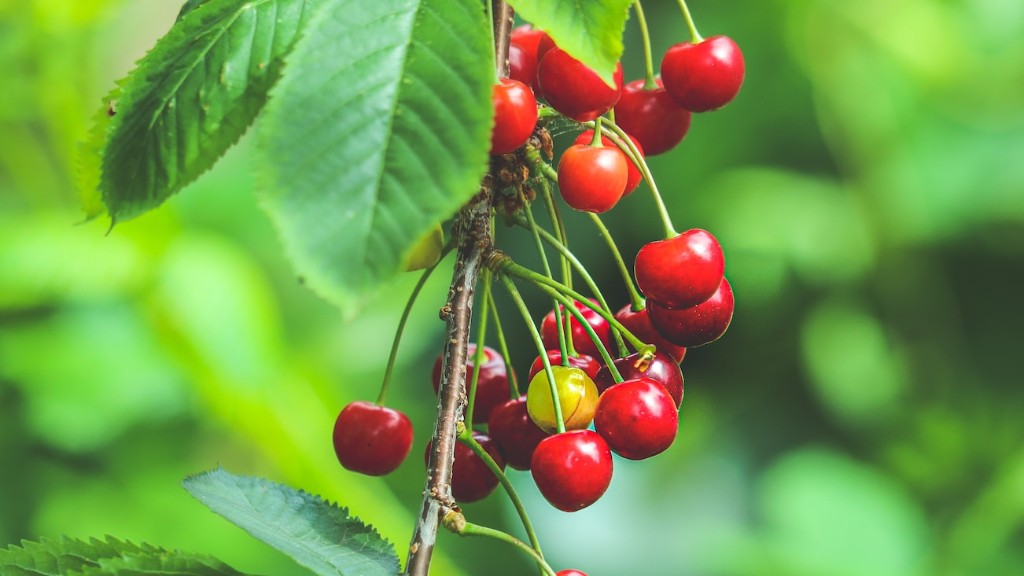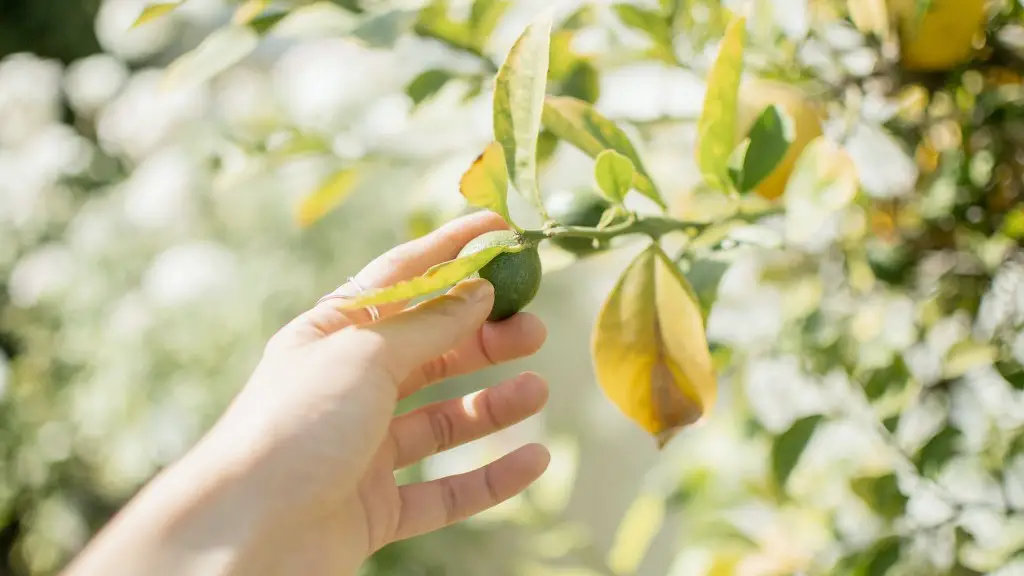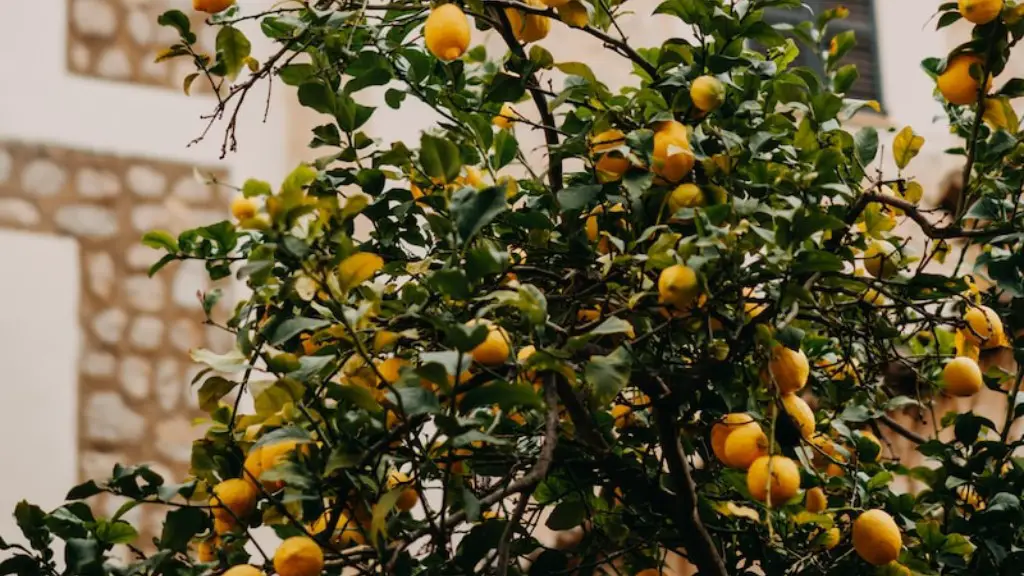Introduction
Pruning a Stella Cherry tree is essential for proper tree health and growth. Proper pruning will increase the number of flowers and fruit produced by the tree and benefit the overall health of the tree. In addition, it will keep the tree in an aesthetically pleasing shape. Pruning is a procedure that requires attention to detail and patience; this article will provide tips and advice on how to prune a Stella Cherry tree properly and safely.
The Basics
Before pruning a Stella Cherry tree, it is important to understand the basics of tree pruning. Pruning involves removing dead and damaged branches to keep the tree healthy and safe. Additionally, it helps the tree in producing more flowers and fruits, as well as keeping it aesthetically pleasing. Stella Cherry trees should be pruned in late winter, when the tree is dormant. Pruning at this time will minimize the tree’s stress and yield the best results. Pruning in late winter is also beneficial for trees that are susceptible to pests and diseases.
The Right Tools
Before pruning a Stella Cherry tree, it is important to assemble the right tools. Pruning shears are necessary for small branches; loppers are needed for larger branches. It is also important to have a sharp saw or folding pruning saw for branches that are too big to be pruned with shears or loppers. It is also important to wear protective clothing and gloves and to disinfect the tools after use to prevent the spread of infection.
Pruning Guidelines
Pruning a Stella Cherry tree should always be done according to guidelines. The primary goal of pruning is to remove unhealthy branches, instead of creating a desired shape. As such, branches should always be pruned in small increments, to minimize stress on the tree. Additionally, cuts should always be made a few inches from the trunk, to avoid damaging the main trunk. If a branch is too large to be cut all at once, it is important to make several cuts to minimize the possibility of the branch splitting and damaging the tree.
Pruning Younger Trees
When pruning younger Stella Cherry trees, it is important to focus on removing any dead, broken, or diseased branches first. Additionally, it is important to eliminate any “suckers” or smaller shoots growing towards the center of the tree. This will help to create a sturdy branching form and promote better growth. Once the unhealthy branches have been removed, it is important to focus on growth direction. This involves selectively pruning branches to create an aesthetically pleasing tree shape and to maximize light intake.
Pruning Older Trees
When pruning older Stella Cherry trees, the focus should be on removing any dead, broken, or diseased branches first. After this has been accomplished, the primary goal is to maintain the tree’s existing shape and its size. This involves removing any branches that are rubbing against each other or are growing inward. Additionally, it is important to trim back extremities that are creating an overly dense canopy. This will promote better airflow and help to prevent pest infestations.
Trimming
The final step of pruning a Stella Cherry tree is to trim the branches. Trimming involves removing any “suckers” or smaller shoots growing towards the center of the tree. It also helps to reduce the size of the tree and encourage a more compact shape. Additionally, it can help to reduce the amount of work required in future pruning sessions.
Tips for Pruning Stella Cherry Trees
Get the Right Tools
Before pruning a Stella Cherry tree, it is important to ensure that you have the right tools. Pruning shears and loppers are necessary for basic pruning, while a sharp saw or pruning saw may be necessary for larger branches. Additionally, it is important to wear protective clothing and gloves to protect yourself from any cuts or scrapes while pruning.
Make Clean Cuts
When pruning a Stella Cherry tree, it is important to make clean cuts. This means making sure that the cuts are made a few inches away from the trunk and that the cuts are made in a single motion. Additionally, it is important to make multiple cuts for large branches, instead of attempting to cut through the entire limb in one motion.
Keep it Simple
When pruning a Stella Cherry tree, it is important to keep the pruning process simple. This means focusing on removing any dead, broken, or diseased branches first. After this, it is important to trim back extremities and remove any “suckers” or smaller shoots growing towards the center of the tree. Finally, it is important to maintain a basic tree shape and size with regular pruning.
Enlist Professional Help
Finally, it is important to enlist the help of a professional if necessary. Pruning can be a tricky and dangerous process, so it is important to get professional help if you are unsure of how to proceed. Professional arborists can provide valuable advice on how to properly prune your tree and keep it looking healthy and vigorous.
Tools of the Trade
Right Tools
The key to proper pruning is to have the right tools. Pruning shears and loppers are essential for basic pruning, while a sharp saw or folding pruning saw may be necessary for larger branches. It is also important to have protective clothing and gloves to protect yourself from any cuts or scrapes while pruning.
Clean Cuts
When pruning a Stella Cherry tree, it is important to make clean cuts. This means making sure that the cuts are made a few inches away from the trunk and the cuts are made in a single motion. Additionally, it is important to make multiple cuts for large branches, instead of attempting to cut through the entire limb in one motion.
Safety First
It is also important to take safety precautions when pruning a Stella Cherry tree. This includes wearing protective gear, working from a ladder if necessary and avoiding pruning in wet or windy conditions. It is also important to keep in mind that pruning a tree can be dangerous, so enlist the help of a professional if necessary.
Keep it Neat
It is also important to keep your pruning neat and organized. This means removing all branches at one time and storing them in a pile to prevent them from becoming a tripping hazard. Additionally, it is important to immediately dispose of all fallen branches, to prevent them from becoming a fire hazard.
Maintenance and Care
Regular Pruning
Regular pruning of a Stella Cherry tree is necessary to maintain its health and growth. This involves removing dead, diseased, or broken branches and trimming back branches that are growing inward. Additionally, pruning younger trees involves removing “suckers” or smaller shoots growing towards the center of the tree and selectively pruning branches to promote better growth.
Insect Control
Insect control is an essential part of maintaining the health of a Stella Cherry tree. Regularly inspecting the tree for signs of pests and treating the infestation appropriately can help to prevent damage to the tree. Additionally, it is important to use pest-control methods that are safe for the environment and safe for humans.
Watering
Watering a Stella Cherry tree is essential for its health. Depending on the climate, it may be necessary to water the tree twice a week during the summer or even more frequently during times of high heat. It is important to ensure that the tree has access to a constant supply of water, as the tree’s roots will be able to absorb water more efficiently if they are not dry.
Fertilizing
Fertilizing a Stella Cherry tree is necessary for promoting better growth and producing larger fruits. Fertilizers should be applied every six months during the growing season and should be adjusted based on the tree’s size and the climate. Additionally, it is important to make sure to use only organic fertilizers to avoid polluting the environment.
Disease Management
Identifying Disease
It is important to identify any diseases or pests that may be present in a Stella Cherry tree. Certain symptoms are associated with different diseases, such as yellowing leaves and cankers. Additionally, some pests may leave behind sticky residue or chewed leaves. Identifying these signs can help to quickly diagnose an infestation.
Treating Disease
Once a disease or pest infestation has been identified, it is important to treat it immediately. Treatments vary depending on the type of disease or pest, but may include spraying the tree with insecticides or applying fungicides. Additionally, it is important to monitor the tree to ensure that the treatment is effective.
Preventing Disease
In addition to treating any diseases or pests, it is important to take steps to prevent them from occurring in the first place. This includes avoiding pruning during wet weather and regularly inspecting trees for any signs of pests or disease. Additionally, it is important to use only organic fertilizers and pest-control methods to reduce the risk of contamination.
Additional Considerations
Light Requirements
When choosing a location for a Stella Cherry tree, it is important to keep in mind the tree’s light requirements. Stella Cherry trees prefer plenty of sun, so they should be planted in a spot that receives at least six hours of sunlight each day. Additionally, the tree should be planted in a protected area to minimize the effects of wind and other weather elements.
Soil Preparation
It is also important to prepare the soil prior to planting a Stella Cherry tree. The soil should be well-draining and amended with compost to increase fertility and water-holding capacity. Additionally, an organic mulch should be added around the tree to improve soil structure, retain moisture, and prevent weeds from growing.
Harvesting
Finally, it is important to harvest Stella Cherry trees at the right time. The cherries are usually ready to be harvested when the fruits turn a deep red and pull away easily from the stem. Additionally, it is important to avoid harvesting any cherries that are not fully ripe, as this can affect the taste and texture of the fruit.



